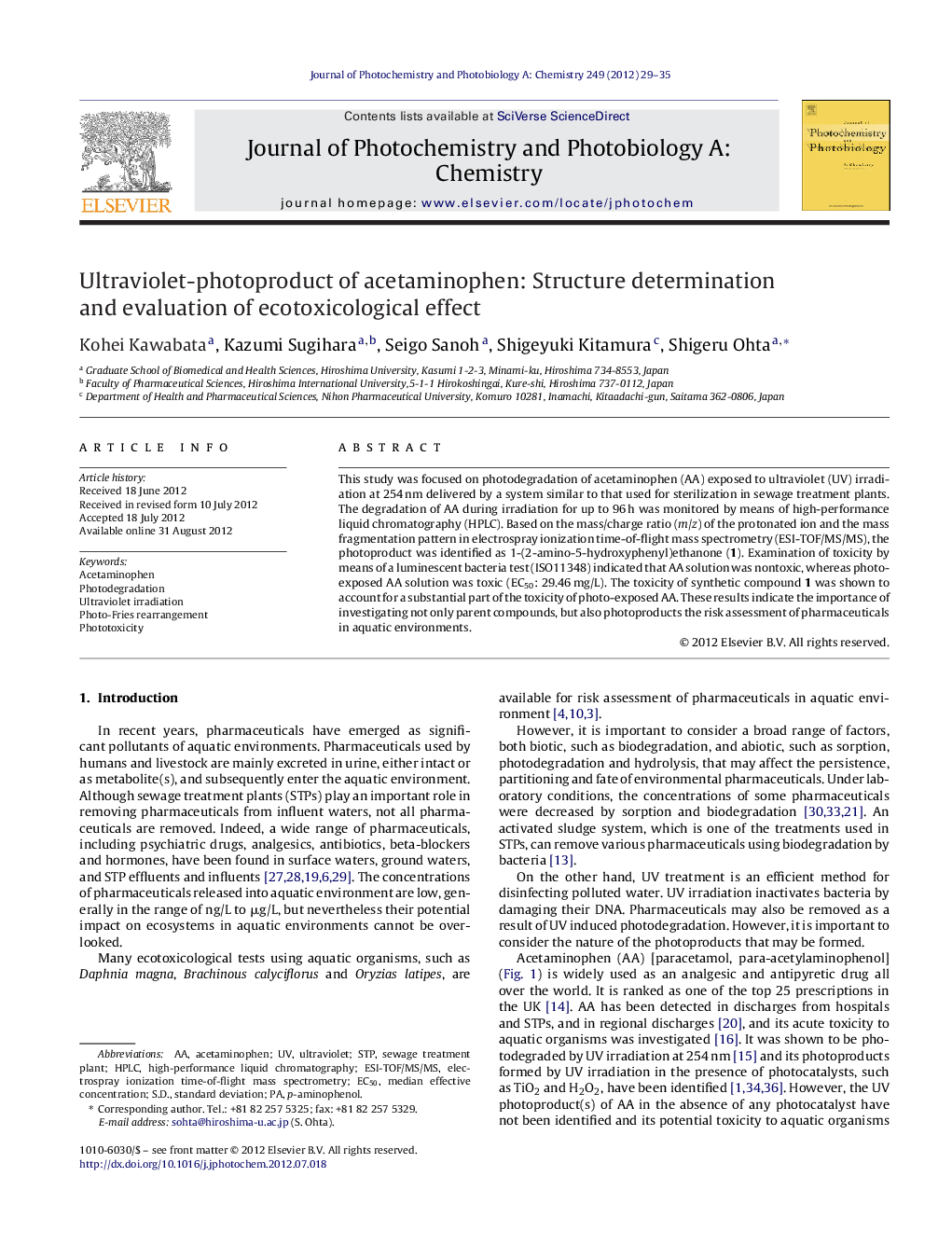| Article ID | Journal | Published Year | Pages | File Type |
|---|---|---|---|---|
| 26746 | Journal of Photochemistry and Photobiology A: Chemistry | 2012 | 7 Pages |
This study was focused on photodegradation of acetaminophen (AA) exposed to ultraviolet (UV) irradiation at 254 nm delivered by a system similar to that used for sterilization in sewage treatment plants. The degradation of AA during irradiation for up to 96 h was monitored by means of high-performance liquid chromatography (HPLC). Based on the mass/charge ratio (m/z) of the protonated ion and the mass fragmentation pattern in electrospray ionization time-of-flight mass spectrometry (ESI-TOF/MS/MS), the photoproduct was identified as 1-(2-amino-5-hydroxyphenyl)ethanone (1). Examination of toxicity by means of a luminescent bacteria test (ISO11348) indicated that AA solution was nontoxic, whereas photo-exposed AA solution was toxic (EC50: 29.46 mg/L). The toxicity of synthetic compound 1 was shown to account for a substantial part of the toxicity of photo-exposed AA. These results indicate the importance of investigating not only parent compounds, but also photoproducts the risk assessment of pharmaceuticals in aquatic environments.
Graphical abstractFigure optionsDownload full-size imageDownload as PowerPoint slideHighlights► Photodegradation of acetaminophen and the generation of its photoproduct by UV irradiation were examined. ► The photoproduct was 1-(2-amino-5-hydroxyphenyl)ethanone. ► Acetaminophen solution had no effect on aquatic organisms. ► Photo-exposed acetaminophen solution showed marked toxicity for aquatic organisms. ► Synthetic 1-(2-amino-5-hydroxyphenyl)ethanone showed toxicity stronger than acetaminophen solution.
